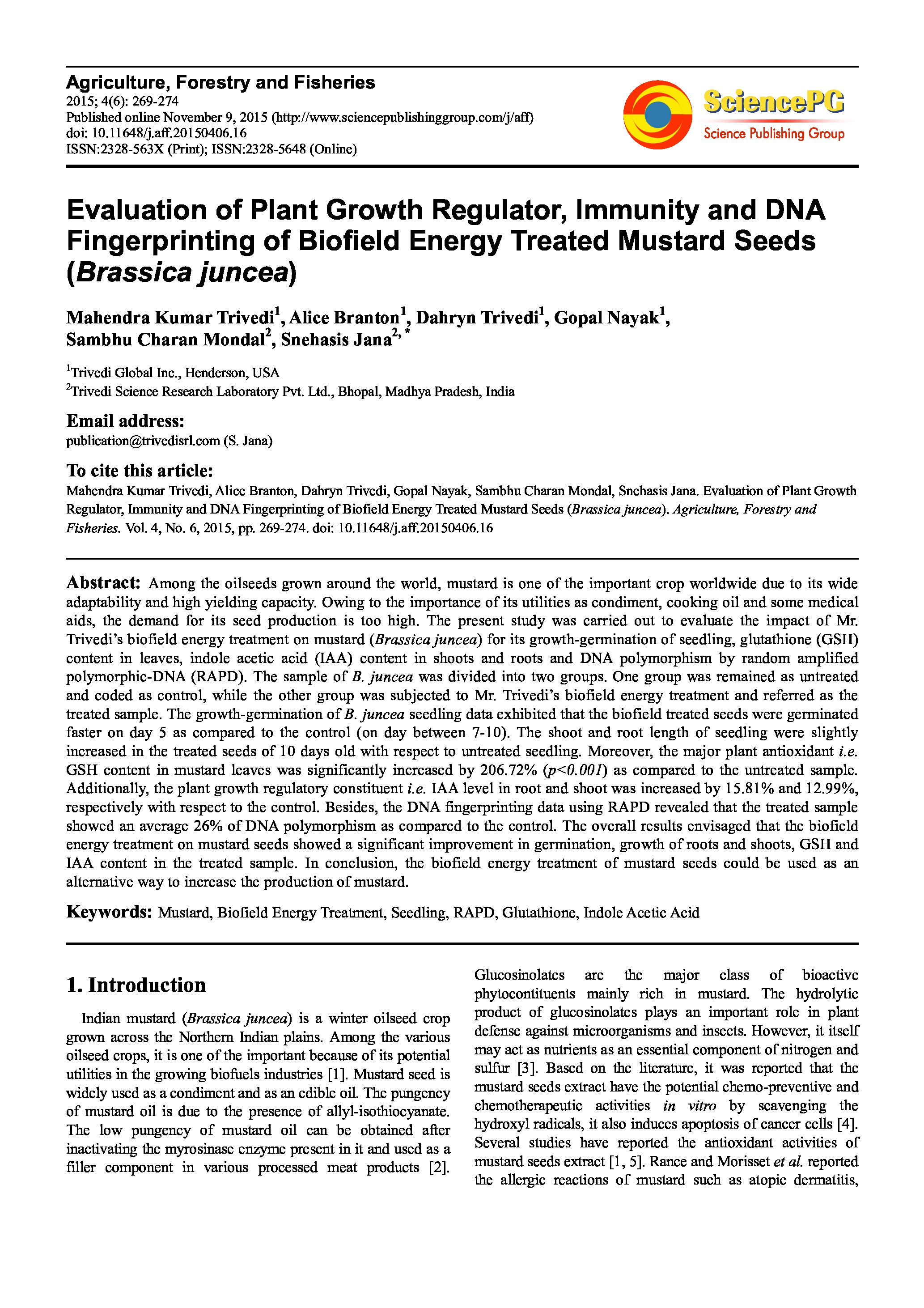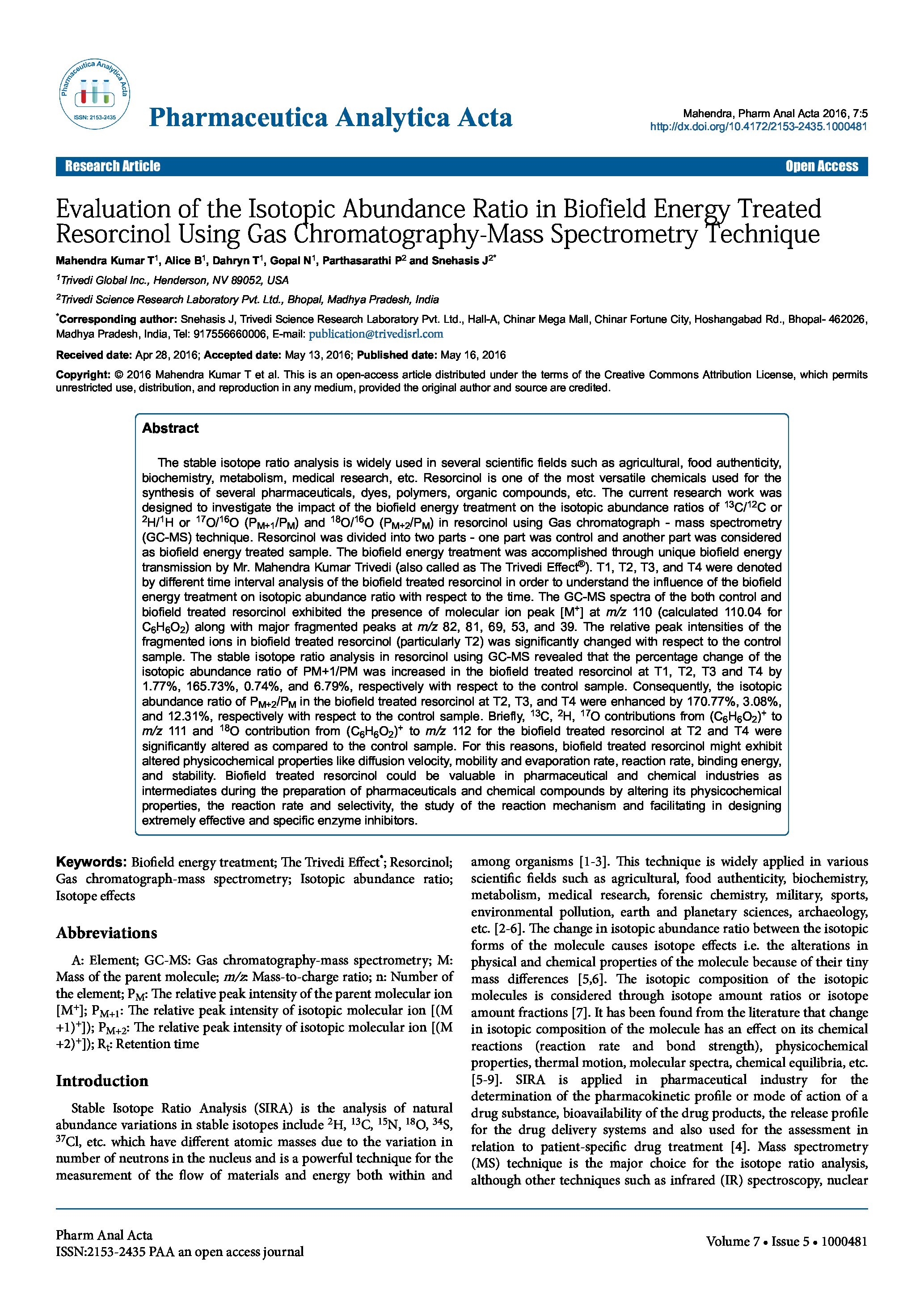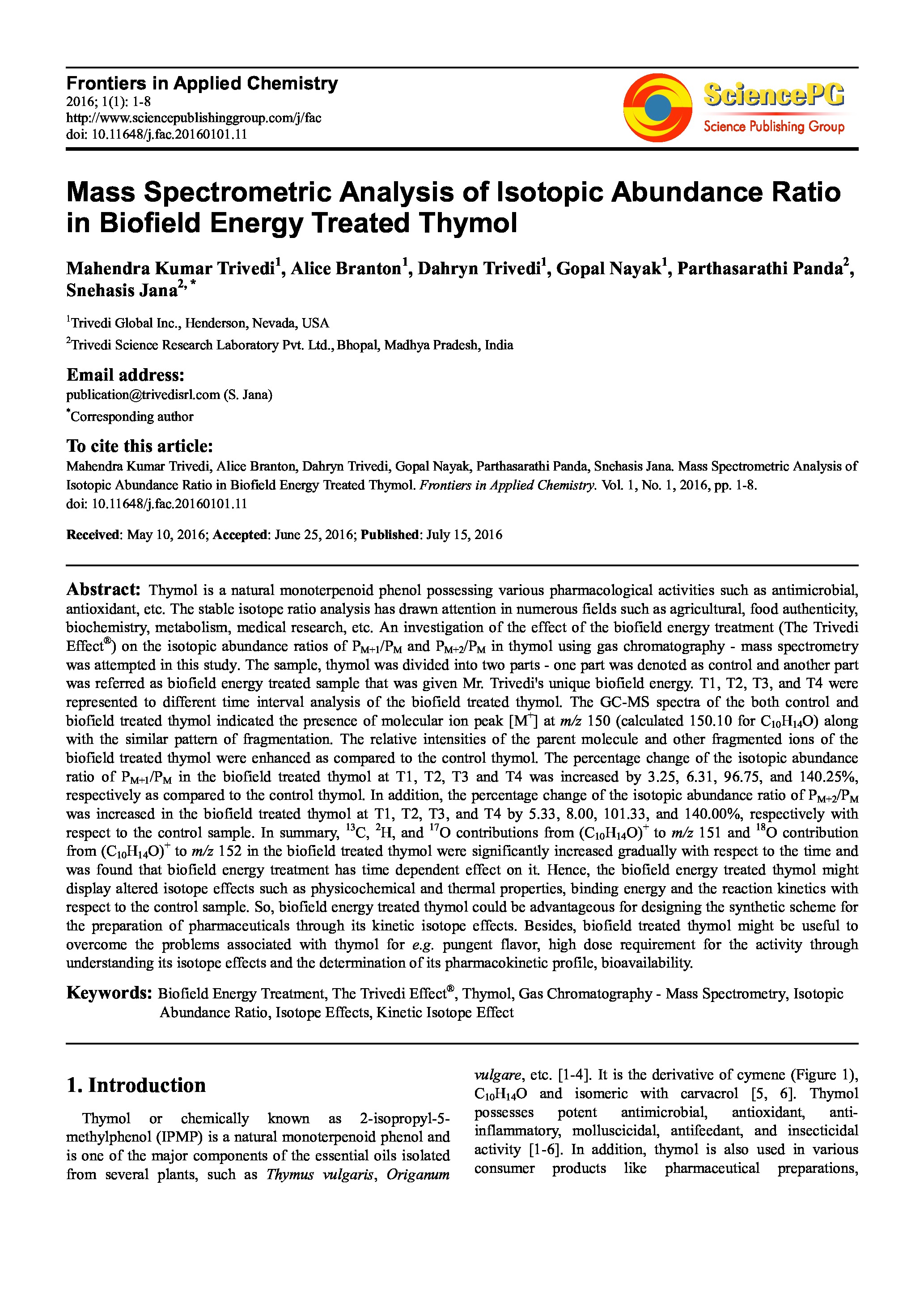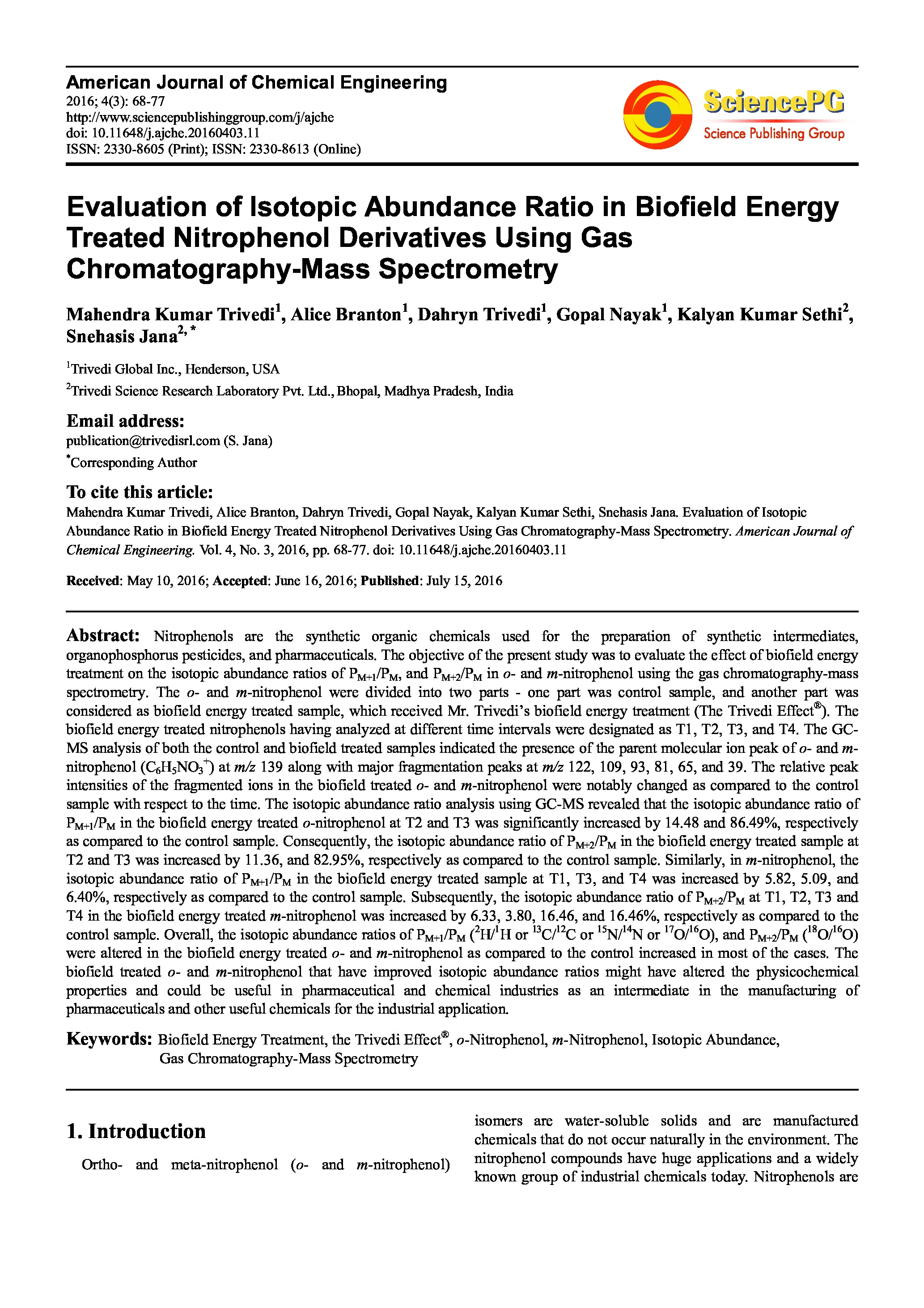Date of upload:
14.12.2016
Co-author:
Mahendra Kumar Trivedi, Alice Branton, Dahryn Trivedi, Parthasarathi Panda, Snehasis Jana
Abstract:
The stable isotope ratio analysis is widely used in several scientific fields such as agricultural, food authenticity, biochemistry, metabolism, medical research, etc. Resorcinol is one of the most versatile chemicals used for the synthesis of several pharmaceuticals, dyes, polymers, organic compounds, etc. The current research work was designed to investigate the impact of the biofield energy treatment on the isotopic abundance ratios of 13C/12C or 2H/1H or 17O/16O (PM+1/PM) and 18O/16O (PM+2/PM) in resorcinol using Gas chromatograph - mass spectrometry (GC-MS) technique. Resorcinol was divided into two parts - one part was control and another part was considered as biofield energy treated sample. The biofield energy treatment was accomplished through unique biofield energy transmission by Mr. Mahendra Kumar Trivedi (also called as The Trivedi Effect®). T1, T2, T3, and T4 were denoted by different time interval analysis of the biofield treated resorcinol in order to understand the influence of the biofield energy treatment on isotopic abundance ratio with respect to the time. The GC-MS spectra of the both control and biofield treated resorcinol exhibited the presence of molecular ion peak [M+] at m/z 110 (calculated 110.04 for C6H6O2) along with major fragmented peaks at m/z 82, 81, 69, 53, and 39. The relative peak intensities of the fragmented ions in biofield treated resorcinol (particularly T2) was significantly changed with respect to the control sample. The stable isotope ratio analysis in resorcinol using GC-MS revealed that the percentage change of the isotopic abundance ratio of PM+1/PM was increased in the biofield treated resorcinol at T1, T2, T3 and T4 by 1.77%, 165.73%, 0.74%, and 6.79%, respectively with respect to the control sample. Consequently, the isotopic abundance ratio of PM+2/PM in the biofield treated resorcinol at T2, T3, and T4 were enhanced by 170.77%, 3.08%, and 12.31%, respectively with respect to the control sample. Briefly, 13C, 2H, 17O contributions from (C6H6O2)+ to m/z 111 and 18O contribution from (C6H6O2)+ to m/z 112 for the biofield treated resorcinol at T2 and T4 were significantly altered as compared to the control sample. For this reasons, biofield treated resorcinol might exhibit altered physicochemical properties like diffusion velocity, mobility and evaporation rate, reaction rate, binding energy, and stability. Biofield treated resorcinol could be valuable in pharmaceutical and chemical industries as intermediates during the preparation of pharmaceuticals and chemical compounds by altering its physicochemical properties, the reaction rate and selectivity, the study of the reaction mechanism and facilitating in designing extremely effective and specific enzyme inhibitors.




